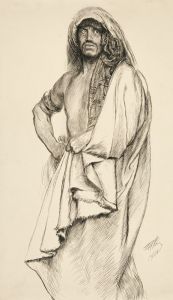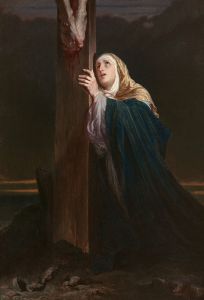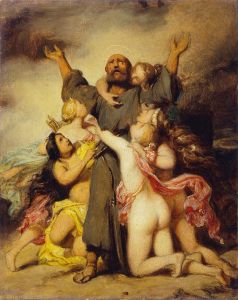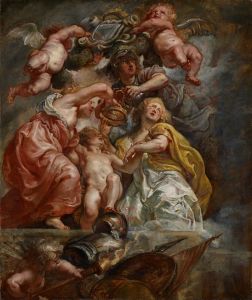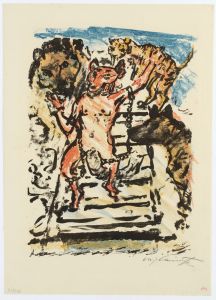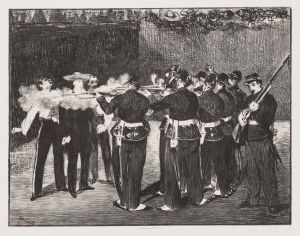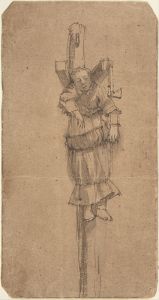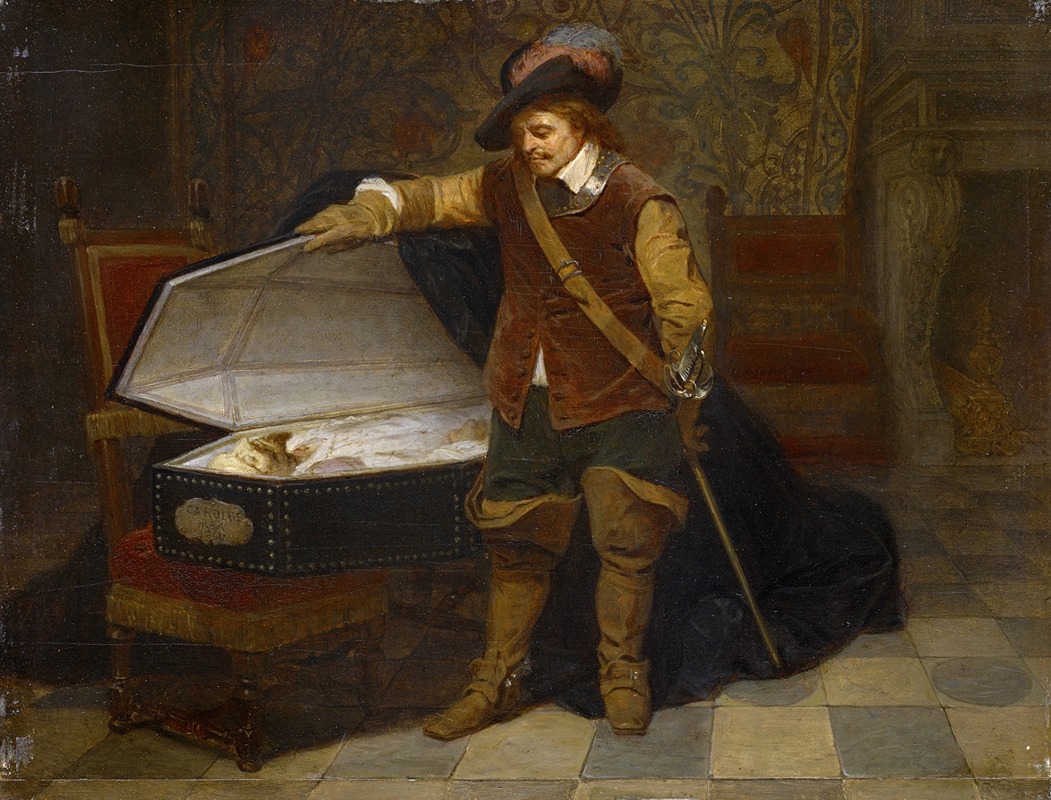
Cromwell And Charles I
A hand-painted replica of Paul Delaroche’s masterpiece Cromwell And Charles I, meticulously crafted by professional artists to capture the true essence of the original. Each piece is created with museum-quality canvas and rare mineral pigments, carefully painted by experienced artists with delicate brushstrokes and rich, layered colors to perfectly recreate the texture of the original artwork. Unlike machine-printed reproductions, this hand-painted version brings the painting to life, infused with the artist’s emotions and skill in every stroke. Whether for personal collection or home decoration, it instantly elevates the artistic atmosphere of any space.
Paul Delaroche's painting "Cromwell and Charles I" is a notable work that captures a significant moment in English history. Painted in 1831, this artwork reflects Delaroche's interest in historical subjects and his ability to convey dramatic narratives through his art. Delaroche was a French painter known for his detailed and realistic depictions of historical events, and this painting is a prime example of his style.
The painting illustrates a scene involving Oliver Cromwell, the English military and political leader, and King Charles I of England. The historical context of this painting is set during the English Civil War, a series of armed conflicts and political machinations between Parliamentarians ("Roundheads") and Royalists ("Cavaliers") from 1642 to 1651. This period was marked by a struggle for power between the monarchy, led by King Charles I, and Parliament, which sought to limit the king's authority.
In "Cromwell and Charles I," Delaroche depicts a moment of introspection and tension. The painting shows Oliver Cromwell standing beside the coffin of Charles I, who was executed in 1649 after being tried and convicted of high treason. This execution marked a pivotal moment in English history, leading to the temporary abolition of the monarchy and the establishment of the Commonwealth of England under Cromwell's leadership.
Delaroche's painting is renowned for its emotional depth and attention to detail. Cromwell is portrayed with a contemplative expression, suggesting a complex mix of emotions as he gazes upon the lifeless body of the king he helped to overthrow. The setting is somber, with dim lighting and a stark, almost theatrical composition that emphasizes the gravity of the moment. Delaroche's use of light and shadow enhances the dramatic effect, drawing the viewer's attention to Cromwell's face and the coffin.
The painting is often interpreted as a reflection on the themes of power, mortality, and the consequences of political ambition. Delaroche's choice to focus on this intimate and personal moment, rather than a grandiose battle scene, underscores the human element of historical events. It invites viewers to consider the personal cost of political conflict and the moral complexities faced by those in positions of power.
"Cromwell and Charles I" is housed in the Musée des Beaux-Arts in Nîmes, France. It remains an important work in Delaroche's oeuvre and a significant representation of 19th-century historical painting. The painting continues to be studied and appreciated for its artistic merit and its insightful portrayal of a critical juncture in English history.
Delaroche's work is a testament to his skill in capturing the essence of historical figures and events, making them accessible and engaging to contemporary audiences. Through "Cromwell and Charles I," he offers a window into the past, allowing viewers to reflect on the enduring themes of power, justice, and human frailty.





